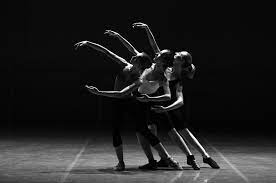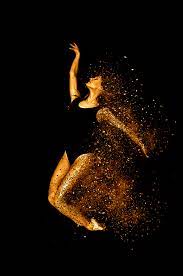The Modern Photography Movement revolutionized the way we capture and perceive images, breaking away from traditional constraints to embrace abstraction, experimentation, and personal expression.
It’s not just about snapping pictures; it’s about challenging viewers’ perspectives and pushing the boundaries of visual storytelling.
Join us as we jump into the core of this transformative era and explore how its innovative techniques continue to influence photographers around the globe.
Origins Of The Modern Photography Movement
The roots of the Modern Photography Movement stretch back to the late 19th and early 20th centuries.
This was a time of rapid advancements in technology and society – both of which played pivotal roles in shaping the movement.
Photographers began to experiment with new techniques that would allow them to express their personal vision and offer commentary on the world around them.
Pioneers such as Alfred Stieglitz and Edward Steichen were instrumental in propelling photography into the realm of fine art.
They advocated for photography as a medium that could stand alongside painting and sculpture, emphasizing its ability for creative expression.
The 1910 exhibition at the Albright-Knox Art Gallery, that Stieglitz led, is often marked as a significant moment for the movement’s recognition.
Photographers soon started to see the potential in moving away from purely representational imagery.
They exploited the capabilities of their cameras and the darkroom to produce images that prioritized form, texture, and composition.
These elements became defining features of the Modern Photography Movement:
- Emphasis on abstraction over exact representation,
- Experimentation with angles, lighting, and framing,
- Exploration of the darkroom as a space for manipulation.
This shift mirrored contemporary movements in other art forms, such as Cubism and Surrealism, which were also breaking away from traditional norms.
Works like Man Ray’s Rayographs and Dora Maar’s innovative photomontages displayed a fusion of photographic skill and artistic imagination.
Throughout the 1920s and 1930s, the movement gathered pace, with photographers keen to explore the capabilities of their art form both as a means of personal expression and social documentary.
Figures like Margaret Bourke-White and Henri Cartier-Bresson used their cameras to capture the evolving human experience.
Their photographs transcended simple visual records, offering profound insights into the complexities of modern life.
Key Characteristics Of Modern Photography
The Modern Photography Movement is defined by its divergence from traditional portraiture and landscape photography.
Instead, it embraces a multitude of characteristics that reflect the zeitgeist of the 20th century.
As experts in the field, we’ve observed that this era of photography is marked by several notable features.
- Experimentation with perspective and scale – Photographers began to play with angles and framing, breaking away from the classic, ‘straight on’ shots.
- Use of unconventional materials and techniques – This includes solarization, photomontage, and double exposure.
- Emphasis on form and content – Modern photographers often convey strong messages or emotions through their work.
Photographers like Stieglitz and Steichen paved the way by championing the potential of photography beyond simple representation.
They set the stage for modernists to treat the camera as a tool for personal expression, much like a paintbrush to a painter.
During this era, photographers became increasingly bold in their subject matter.
They captured the bustle of the street, the intimacies of the human form, and the complexities of industrial growth.
This was in stark contrast to the soft-focus Pictorialism that preceded it.
Distinctly sharp and well-defined prints became the hallmark of Modern Photography.
Embracing themes of urbanism and machine-age modernity, these artists differed significantly from their predecessors.
Themes were revolutionized to include:
- Juxtaposition of light and shadow,
- Movement and dynamism within a frame,
- New subjects such as urban landscapes.
Artistically, Modern Photography is characterized by its narrative power and dynamic composition.
Photographers like Cartier-Bresson pioneered the ‘decisive moment’, focusing on the split second that captures the essence of a situation.
Meanwhile, the likes of Dora Maar experimented with photomontage to communicate powerful messages and critique society.
Modern Photography remains a vibrant and evolutionary art form.
Its practitioners continue to challenge perceptions and push the boundaries of visual storytelling.
Influential Photographers Of The Modern Photography Movement
In tracing the Modern Photography Movement, we must acknowledge the luminaries whose work defined an era.
Two figures stand head-and-shoulders above the rest – Alfred Stieglitz and Edward Steichen.
Not only were they instrumental in the movement’s genesis, but they also extensively promoted photography as a legitimate art form.
While Stieglitz is known for The Steerage, a photographic piece that expertly combines human narratives with geometric abstraction, Steichen excelled in fashion and celebrity portraiture.
His work Gloria Swanson is a testament to his ability to mix glamour with a modern, almost surreal quality.
Steichen’s contemporary, Paul Strand, cannot be overlooked.
His relentless pursuit of simplicity and his embrace of abstraction laid the groundwork for generations of photographers.
His captivating compositions in Wall Street pushed the boundaries of how society views the modern landscape.
The contributions of Dorothea Lange shifted the focus onto the emotional depth within the human condition.
Her iconic Migrant Mother remains one of the most powerful images from the 20th century.
It reflects the hardship and resilience during the Great Depression, making it profoundly resonant with the ethos of modern photography.
Here are a few more photographers who carved their names into the movement:
- Man Ray – His exploration of solarization and photograms in pieces like Le Violon d’Ingres challenged traditional photography.
- Ansel Adams – His stunning landscapes, particularly Moonrise, Hernandez, New Mexico, elevated nature photography to an art form with his precise approach to sharpness and contrast.
- Henri Cartier-Bresson – Often hailed as the father of photojournalism, his decisive moment theory and candid street photography, such as seen in Behind the Gare Saint-Lazare, redefined the ethos of capturing the everyday.
As our journey through modern photography unfolds, it becomes apparent that each photographer introduced a unique dialect into the visual language of the movement.
Their collective work not only narrated the complexities of contemporary life but also forever altered our understanding of what it means to capture a moment through the lens.
Through their legacies, we discover a rich tapestry of innovation and expression that continues to inspire and challenge us.
Evolution Of Techniques And Styles
The Modern Photography Movement bore witness to an extraordinary evolution in both techniques and styles.
We saw photographers moving away from mere documentation towards a stronger, more subjective representation of reality.
Innovations in camera technology and film allowed for greater experimentation on behalf of the artists.
Pioneers of this era employed a variety of new methods to express their creative vision.
They utilized advancements such as:
- The use of natural light and shadow play to evoke mood and atmosphere,
- Experimentation with angles and framing to alter perspectives,
- Techniques like double exposure and photomontage to create surreal and abstract imagery.
Photographers also embraced different styles to portray the changing world around them.
Social realism brought attention to the everyday struggles of people during the Great Depression.
Meanwhile, the street photography of Henri Cartier-Bresson introduced a candid and unplanned aesthetic that captured fleeting moments.
Similarly, Ansel Adams’ landscape photography showcased an unparalleled finesse in visual clarity and depth, employing a technique known as the Zone System.
This method helped photographers achieve a precise control over the tonal range in their images, eventually enhancing textural details and the emotive power of the natural world.
The diversity of approach within modern photography is profound.
From Dorothea Lange’s poignant portraits of displaced farmers to the geometric abstraction in Paul Strand’s work, each style offered a new lens through which we could view our time.
The myriad of techniques developed during the Modern Photography Movement continue to influence and inspire today’s visual storytellers.
Impact Of The Modern Photography Movement On Contemporary Photography
The Modern Photography Movement’s legacy endures, molding the practices and philosophies of countless contemporary photographers.
Today’s artists have inherited a visual language rich in expression and experimentation, thanks to their predecessors’ pioneering works.
The influence is unmistakable in current photographic trends that echo the movement’s embrace of abstraction, candidness, and reinvention of the photographic medium.
Contemporary photography often blurs the lines between reality and art, a concept cemented by modernist photographers who challenged conventional norms.
They taught us to see beauty in the mundane and to understand the power of a photograph not just as a mirror of the world but as a means to reshape it.
We observe these lessons in action as photographers continue to push boundaries, embracing both the simplicity and complexity of human experience.
The echoes of modernism have also found their way into digital photography.
Advances in technology have allowed photographers to experiment in ways that would have astounded the early pioneers:
- Manipulation of images through software that offers an array of filters and effects,
- High dynamic range imaging (HDR) that surpasses the limitations of film,
- The ability to capture and combine thousands of images, creating intricate composites.
Photographers of the modern era have access to an array of tools that expand creative potential, enabling them to create works that are as much about vision as they are about reality.
Just as past innovators utilized the technology of their time to revolutionize photography, today’s photographers use digital tools not only to capture images but also to convey stories and evoke emotions in increasingly innovative ways.
As educators and enthusiasts at Filmmaking Lifestyle, we’ve seen firsthand the profound ways the Modern Photography Movement has informed and inspired current genres like street, portrait, and conceptual photography.
Our community of visual storytellers continues to draw from a well of techniques and philosophies that have stood the test of time, demonstrating how past innovations are integral to the future of photography.
What Is Modern Photography Movement – Wrap Up
We’ve traced the dynamic contours of the Modern Photography Movement and seen how it’s paved the way for the art form we know today.
The movement’s legacy lives on as contemporary photographers continue to explore the interplay of light, shadow, and perspective.
It’s clear that the innovations of past artists are not just historical footnotes but vital tools that shape our current visual language.
As technology evolves, so too does our ability to express the multifaceted nature of human experience through photography.
We’re standing on the shoulders of giants, and it’s thrilling to think about where we’ll go next.
Let’s keep pushing the envelope, inspired by the trailblazers of the Modern Photography Movement.
Frequently Asked Questions
Who Were The Key Photographers In The Modern Photography Movement?
Photographers like Ansel Adams, Henri Cartier-Bresson, and Dorothea Lange were pivotal in the Modern Photography Movement, each contributing unique perspectives and techniques.
What Changes In Technology Influenced The Modern Photography Movement?
Advancements in camera design, film quality, and the introduction of portable cameras allowed for greater experimentation with light, exposure, and unconventional compositions during the movement.
How Did The Modern Photography Movement Change The Perception Of Photography?
The movement shifted photography from just documentation to an art form where subjective representation was valued, leading to creative and interpretive uses of the medium.
What Styles Evolved Within The Modern Photography Movement?
Styles such as social realism, street photography, landscape photography, and experimental techniques like double exposure and photomontage emerged during this era, diversifying the approach to photography.
What Is The Legacy Of The Modern Photography Movement In Today’s Photography?
Contemporary photographers are inspired by the movement’s breaking of traditional boundaries, leading to ongoing innovations in capturing reality and embracing image manipulation and complex visual narratives.
How Has Technology From The Modern Photography Movement Era Affected Contemporary Photography?
Modernist photographers’ use of natural light, shadow, and innovative angles set a foundation for current photographic techniques, and has been complemented by digital advancements like HDR imaging and sophisticated software tools.






